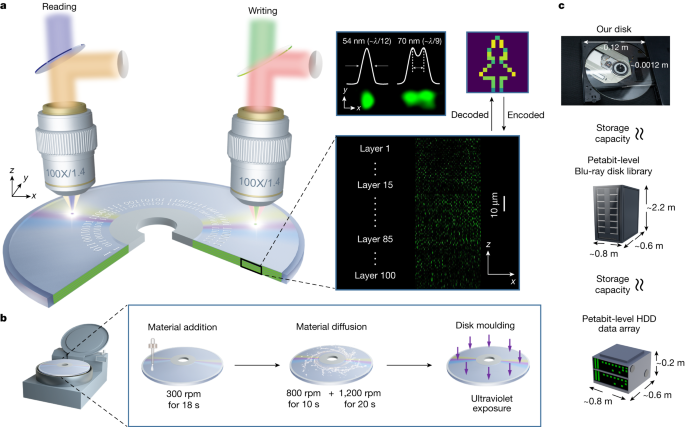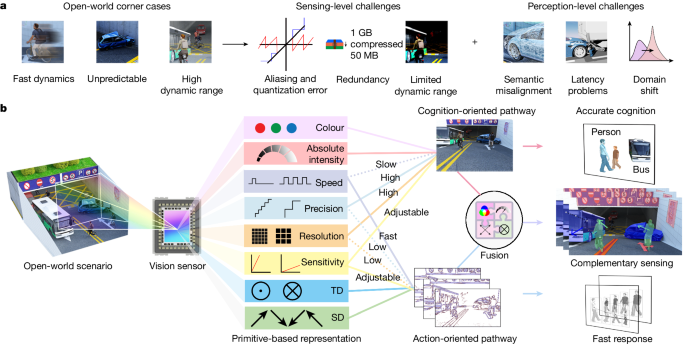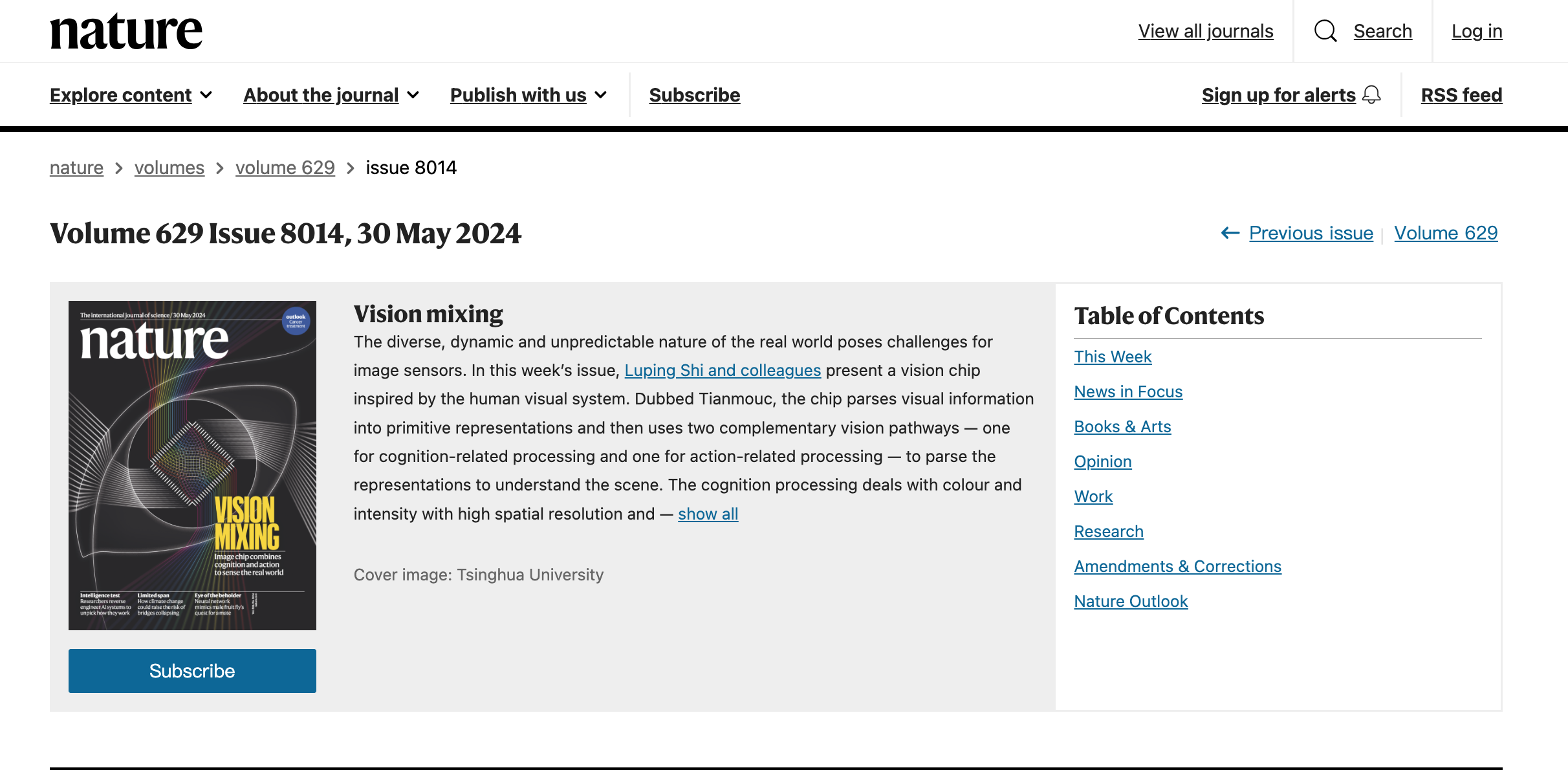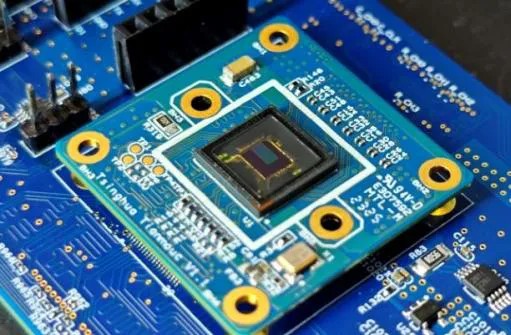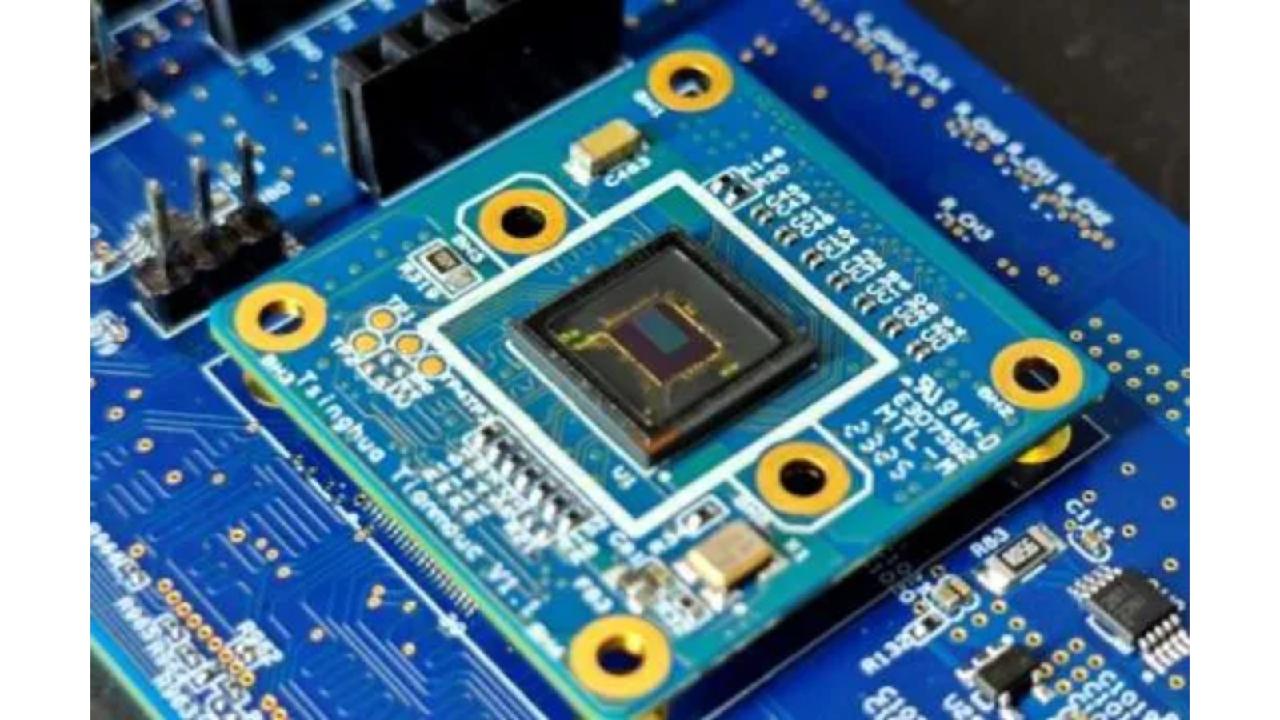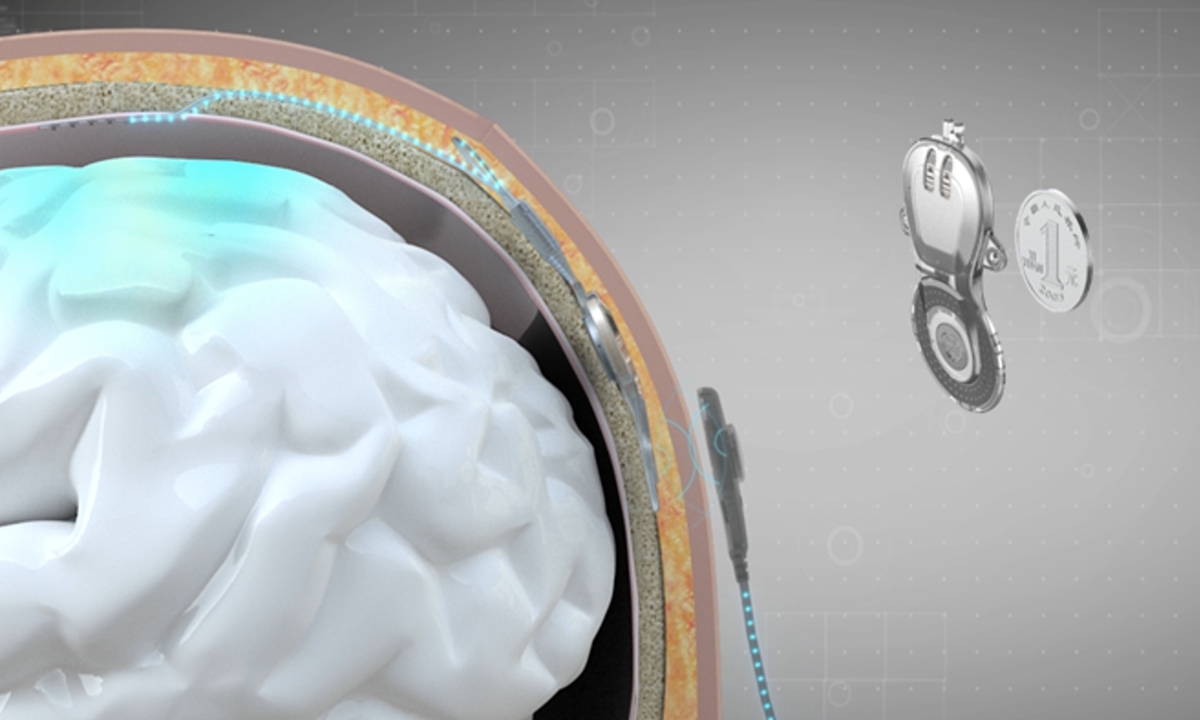Get ready for a future where machines see the world the way we do! Discover Tianmouc, a #VisionChip inspired by the human brain that enhances machine intelligence and safety in #UnmannedSystems:
Inspired by the human visual system, a vision chip with primitive-based complementary pathways is developed to overcome the power and bandwidth wall of vision systems, achieving fast, precise, robust and high-dynamic-range sensing efficiently in the open world.

www.nature.com
http://go.nature.com/3V4aIa9
#InnovativeTsinghua
Chinese scientists make breakthrough in brain-inspired vision chips
Technology20:21, 30-May-2024
Zhao Chenchen
The vision chip "Tianmouc," developed by Chinese scientists, was featured on the cover of the journal Nature in its latest issue, released on May 30, 2024.
A team of Chinese scientists from Tsinghua University has developed a cutting-edge vision chip named "Tianmouc," which could revolutionize how machines perceive and interact with the world. The research was featured on the cover of the journal Nature in its latest issue, released on May 30.
Inspired by the human visual system's complexities, "Tianmouc" achieves high-efficiency performance with a unique design that processes visual information at a rate of 10,000 frames per second and reduces bandwidth usage by 90 percent.
As the development of autonomous driving, intelligent robots and other AI-driven technologies advances, there's a growing demand for enabling machines to "see" the world more effectively.
However, traditional sensor chips often face limitations such as high power consumption, bandwidth constraints, a limited dynamic range and challenges in achieving high resolution and frame rates without latency, noise or scalability issues.
The "Tianmouc" chip. /Tsinghua University
The "Tianmouc" chip, on the other hand, pioneers the sensing paradigm by breaking down visual information into simple, basic elements, according to Shi Luping, the corresponding author of the paper and a professor at the Department of Precision Instrument at Tsinghua University.
By organizing these elements into two pathways – one for detailed understanding and another for quick reaction – the chip can accurately make sense of its surroundings and respond swiftly to changes, just as our brains process the information our eyes gather.
In essence, the chip functions like two 'brains' working in tandem: one for comprehension and the other for rapid response.
"The 'Tianmouc' chip opens new avenues for significant applications such as autonomous driving and embodied intelligence," said Zhao Rong, co-corresponding author and a professor at the same department.
The team also designed the world's first hybrid-paradigm chip, "Tianjic," for brain-inspired computing to facilitate the development of artificial general intelligence (AGI). This research was recognized with a cover feature in Nature in 2019.
Brain-inspired computing is an emerging field where brain scientists and AI engineers collaborate to achieve AGI. By applying fundamental concepts from brain science and neuromorphic engineering, they aim to develop advanced computational models and hardware designed to compute more quickly and efficiently, using less energy than the current AI paradigm.
d suddenly jumps from behind a car. Or someone is throwing an object into the road. Or a big object suddenly falls on the road from a truck.
A team of Chinese scientists from Tsinghua University has developed a cutting-edge vision chip named "Tianmouc," which could revolutionize how machines perceive and interact with the world. The research was featured on the cover of the journal Nature

news.cgtn.com



